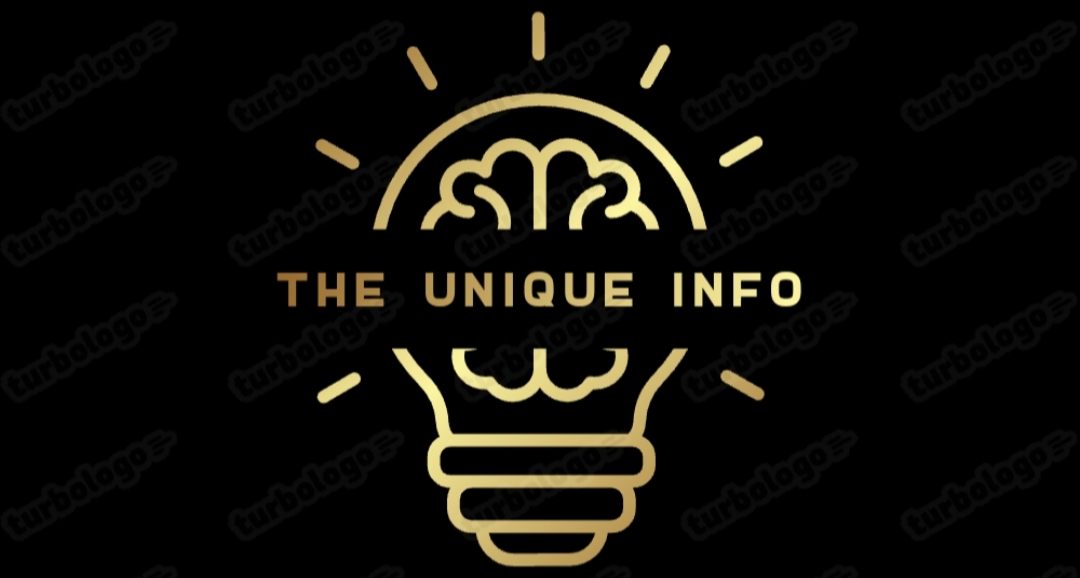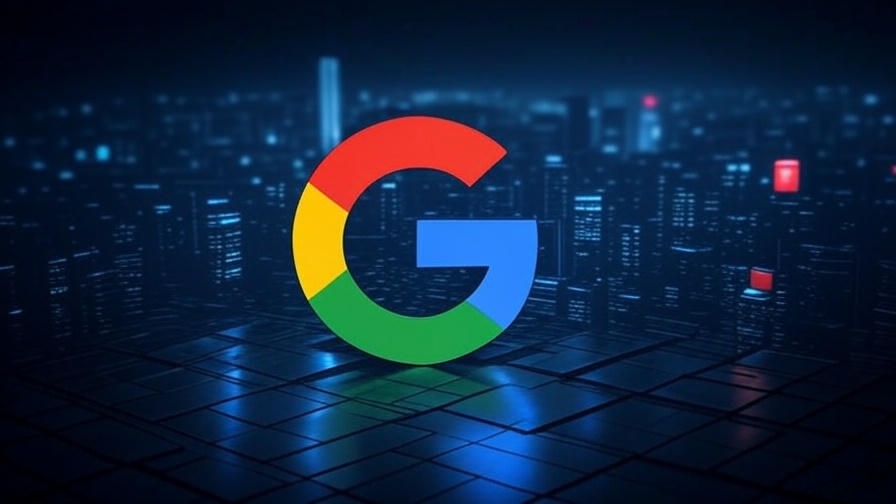𝗜𝗻𝘁𝗿𝗼𝗱𝘂𝗰𝘁𝗶𝗼𝗻
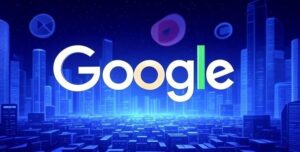
Google, a name synonymous with searching the internet, has grown from a modest research project into one of the most influential technology companies in the world. Founded in 1998 by Larry Page and Sergey Brin, Google’s mission to “organize the world’s information and make it universally accessible and useful” has driven its evolution from a search engine to a global conglomerate offering a vast array of products and services. This case study explores Google’s history, business strategies, innovations, challenges, and its impact on the world, written in a simple and engaging way for all audiences.
With over 90% of the global search engine market share, Google, now under its parent company Alphabet Inc., is a powerhouse in technology, advertising, cloud computing, and artificial intelligence (AI). Its journey offers valuable lessons for entrepreneurs, students, tech enthusiasts, and anyone curious about how a company can transform industries while navigating complex challenges. Let’s dive into the story of Google, its strategies, successes, and the hurdles it faces in today’s dynamic world.
𝗧𝗵𝗲 𝗕𝗶𝗿𝘁𝗵 𝗼𝗳 𝗚𝗼𝗼𝗴𝗹𝗲: 𝗔 𝗥𝗲𝘃𝗼𝗹𝘂𝘁𝗶𝗼𝗻𝗮𝗿𝘆 𝗜𝗱𝗲𝗮
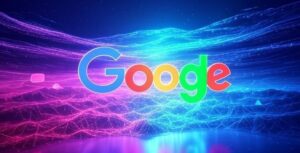
In the mid-1990s, the internet was still in its infancy, and finding information online was a cumbersome process. Search engines like Yahoo! and AltaVista existed, but they often delivered irrelevant results. At Stanford University, two PhD students, Larry Page and Sergey Brin, saw an opportunity to improve how people accessed information online. Their project, initially called “Backrub,” focused on analyzing the web’s link structure to rank the importance of web pages.
This idea evolved into Google, a name inspired by the mathematical term “googol” (the number 1 followed by 100 zeros), symbolizing their ambition to handle vast amounts of information. In 1998, they registered the domain google.com and launched the search engine from a garage in Menlo Park, California, owned by Susan Wojcicki (who later became YouTube’s CEO). With a $100,000 investment from Sun Microsystems co-founder Andy Bechtolsheim, Google was born.
What set Google apart was its PageRank algorithm, which ranked web pages based on the number and quality of links pointing to them. This delivered more relevant search results, quickly gaining users’ trust. By 2000, Google was handling 100 million searches daily, and by 2004, it went public with an initial public offering (IPO) that raised $1.67 billion, valuing the company at $23 billion.
𝗚𝗼𝗼𝗴𝗹𝗲’𝘀 𝗕𝘂𝘀𝗶𝗻𝗲𝘀𝘀 𝗠𝗼𝗱𝗲𝗹: 𝗛𝗼𝘄 𝗜𝘁 𝗠𝗮𝗸𝗲𝘀 𝗠𝗼𝗻𝗲𝘆
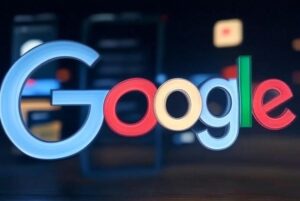
Google’s core business revolves around its search engine, but its revenue model is primarily driven by advertising. In 2023, Alphabet reported revenues of $307 billion, with approximately 80% coming from advertising, particularly through Google Ads.
𝟭. 𝗚𝗼𝗼𝗴𝗹𝗲 𝗔𝗱𝘀 𝗮𝗻𝗱 𝗦𝗲𝗮𝗿𝗰𝗵 𝗔𝗱𝘃𝗲𝗿𝘁𝗶𝘀𝗶g
Google Ads (formerly AdWords) allows businesses to bid on keywords so their ads appear alongside search results. For example, if you search “best running shoes,” sponsored links appear at the top or side of the results page. Advertisers pay Google each time a user clicks their ad (pay-per-click model). This model is highly effective because Google’s dominance in search ensures ads reach billions of users daily.
𝟮. 𝗗𝗶𝘃𝗲𝗿𝘀𝗶𝗳𝗶𝗲𝗱 𝗥𝗲𝘃𝗲𝗻𝘂𝗲 𝗦𝘁𝗿𝗲𝗮𝗺𝘀
While advertising is Google’s bread and butter, it has diversified into other areas:
• Google Cloud: A fast-growing segment offering cloud computing services to businesses, competing with Amazon Web Services (AWS) and Microsoft Azure.
• YouTube: Acquired in 2006 for $1.65 billion, YouTube generates revenue through ads, subscriptions (YouTube Premium), and creator partnerships.
• Hardware: Products like Pixel smartphones, Google Nest smart home devices, and Fitbit wearables contribute to revenue.
• Google Play Store: Revenue from app sales, in-app purchases, and subscriptions on Android devices.
• Other Bets: Alphabet invests in innovative projects like Waymo (self-driving cars), Verily (healthcare), and DeepMind (AI research).
This diversification reduces Google’s reliance on advertising, though search remains its financial backbone.
𝗚𝗼𝗼𝗴𝗹𝗲’𝘀 𝗚𝗿𝗼𝘄𝘁𝗵 𝗮𝗻𝗱 𝗜𝗻𝗻𝗼𝘃𝗮𝘁𝗶𝗼𝗻𝘀
Google’s ability to innovate and expand beyond search has been key to its success. Here are some of its most impactful products and services:
𝟭. 𝗦𝗲𝗮𝗿𝗰𝗵 𝗘𝗻𝗴𝗶𝗻𝗲 𝗘𝘃𝗼𝗹𝘂𝘁𝗶𝗼𝗻
Google’s search engine has evolved far beyond simple web searches. Features like Google Knowledge Graph (introduced in 2012) provide instant answers to queries, such as facts about historical figures or weather updates. Voice search, powered by Google Assistant, and visual search through Google Lens further enhance user experience.
𝟮. 𝗔𝗻𝗱𝗿𝗼𝗶𝗱 𝗮𝗻𝗱 𝗠𝗼𝗯𝗶𝗹𝗲 𝗗𝗼𝗺𝗶𝗻𝗮𝗻𝗰𝗲
To stay relevant in the mobile era, Google acquired Android Inc. in 2005 for $50 million. Today, Android powers over 70% of smartphones worldwide, making it the leading mobile operating system. By offering Android as an open-source platform, Google ensures its services (Search, Maps, YouTube) are pre-installed on millions of devices.
𝟯. 𝗬𝗼𝘂𝗧𝘂𝗯𝗲: 𝗧𝗵𝗲 𝗩𝗶𝗱𝗲𝗼 𝗚𝗶𝗮𝗻𝘁
YouTube, acquired in 2006, is the world’s largest video-sharing platform, with over 2.5 billion monthly active users. It has transformed how people consume content, from entertainment to education, and is a major revenue driver through ads and subscriptions.
𝟰. 𝗚𝗼𝗼𝗴𝗹𝗲 𝗠𝗮𝗽
Launched in 2005, Google Maps revolutionized navigation with real-time traffic updates, Street View, and location-based services. It’s now an essential tool for millions, from finding directions to discovering local businesses.
𝟱. 𝗔𝗜 𝗮𝗻𝗱 𝗠𝗮𝗰𝗵𝗶𝗻𝗲 𝗟𝗲𝗮𝗿𝗻𝗶𝗻𝗴
Google is a leader in AI, with projects like DeepMind and Google Brain pushing boundaries in machine learning. AI powers features like Google Translate, Smart Reply in Gmail, and personalized recommendations on YouTube. In 2023, Google launched Bard, its AI chatbot, to compete with ChatGPT, though it faced criticism for inaccuracies in early demos.
𝟲. 𝗚𝗼𝗼𝗴𝗹𝗲 𝗪𝗼𝗿𝗸𝘀𝗽𝗮𝗰𝗲
Google Workspace (formerly G Suite) includes tools like Gmail, Google Drive, Docs, and Meet, used by millions of businesses and individuals for collaboration and productivity. It competes with Microsoft Office, offering cloud-based solutions that enable real-time teamwork.
𝟳. 𝗛𝗮𝗿𝗱𝘄𝗮𝗿𝗲 𝗩𝗲𝗻𝘁𝘂𝗿𝗲𝘀
Google’s hardware division includes Pixel smartphones, Google Nest smart home devices, and Fitbit (acquired in 2021 for $2.1 billion). While not as dominant as Apple or Samsung, Google’s hardware integrates seamlessly with its software ecosystem.
𝗚𝗼𝗼𝗴𝗹𝗲’𝘀 𝗢𝗿𝗴𝗮𝗻𝗶𝘇𝗮𝘁𝗶𝗼𝗻𝗮𝗹 𝗖𝘂𝗹𝘁𝘂𝗿𝗲: 𝗧𝗵𝗲 “𝗚𝗼𝗼𝗴𝗹𝗲𝘆” 𝗪𝗮𝘆
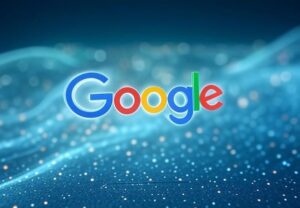
Google’s unique culture, often described as “Googley,” has been a cornerstone of its success. Here’s what makes it stand out:1.
𝟭. 𝗜𝗻𝗻𝗼𝘃𝗮𝘁𝗶𝗼𝗻 𝗮𝗻𝗱 𝗖𝗿𝗲𝗮𝘁𝗶𝘃𝗶𝘁𝘆
Google encourages employees to spend 20% of their time on passion projects, leading to innovations like Gmail and Google News. This culture of experimentation fosters creativity and keeps Google at the forefront of technology.
𝟮. 𝗘𝗺𝗽𝗹𝗼𝘆𝗲𝗲-𝗖𝗲𝗻𝘁𝗿𝗶𝗰 𝗘𝗻𝘃𝗶𝗿𝗼𝗻𝗺𝗲𝗻𝘁
Google’s offices, like the Googleplex in Mountain View, California, are famous for perks like free gourmet meals, nap pods, and on-site gyms. Generous benefits, including parental leave and wellness programs, create a supportive workplace.
𝟯. 𝗙𝗹𝗮𝘁 𝗢𝗿𝗴𝗮𝗻𝗶𝘇𝗮𝘁𝗶𝗼𝗻𝗮𝗹 𝗦𝘁𝗿𝘂𝗰𝘁𝘂𝗿𝗲
In its early days, Google had a flat structure with minimal hierarchy, allowing engineers to collaborate freely. While the company has grown, it still promotes open communication and employee input.
𝟰. 𝗣𝗿𝗼𝗷𝗲𝗰𝘁 𝗢𝘅𝘆𝗴𝗲𝗻
In 2009, Google launched Project Oxygen to study what makes a great manager. The study identified eight behaviors, such as empowering teams and fostering psychological safety, which Google now uses to train its leaders.
However, as Google grew, maintaining this culture became challenging. Critics argue that bureaucracy has crept in, and the company’s size (over 180,000 employees in 2023) makes it harder to stay nimble.
𝗦𝘁𝗿𝗮𝘁𝗲𝗴𝗶𝗰 𝗔𝗻𝗮𝗹𝘆𝘀𝗶𝘀: 𝗦𝗪𝗢𝗧 𝗙𝗿𝗮𝗺𝗲𝘄𝗼𝗿𝗸
A SWOT analysis (Strengths, Weaknesses, Opportunities, Threats) provides insight into Google’s market position.
𝗦𝘁𝗿𝗲𝗻𝗴𝘁𝗵𝘀
Market Dominance: Google holds over 90% of the global search engine market, giving it unparalleled reach.
Innovation Leadership: Investments in AI, cloud computing, and hardware keep Google ahead of competitors.
Brand Value: Google’s brand is synonymous with trust and reliability, ranked among the world’s most valuable.
Financial Power: Alphabet’s revenue and cash reserves (over $100 billion in 2023) fund ambitious projects.
𝗪𝗲𝗮𝗸𝗻𝗲𝘀𝘀𝗲𝘀
Dependence on Advertising: Despite diversification, 80% of revenue comes from ads, making Google vulnerable to market shifts.
Privacy Concerns: Google’s data collection practices have led to lawsuits and regulatory fines, such as a €50 million GDPR fine in 2019.
Innovation Risks: Not all projects succeed (e.g., Google Glass, Google+), leading to wasted resources.
𝗢𝗽𝗽𝗼𝗿𝘁𝘂𝗻𝗶𝘁𝗶𝗲𝘀
AI Expansion: AI-driven products like autonomous vehicles (Waymo) and healthcare solutions (Verily) offer growth potential.
Cloud Computing: Google Cloud is growing rapidly, with a 28% revenue increase in 2023, positioning it to challenge AWS and Azure.
Emerging Markets: Expanding internet access in regions like Africa and Southeast Asia creates new user bases.
𝗧𝗵𝗿𝗲𝗮𝘁𝘀
Competition: Rivals like Microsoft (Bing, Azure), Amazon (AWS), and Apple (Siri) challenge Google’s dominance.
Regulation: Antitrust lawsuits and privacy regulations, like GDPR, threaten fines and restrictions.
Changing User Behavior: Younger users are turning to platforms like TikTok and Instagram for searches, bypassing Google.
𝗖𝗵𝗮𝗹𝗹𝗲𝗻𝗴𝗲𝘀 𝗙𝗮𝗰𝗶𝗻𝗴 𝗚𝗼𝗼𝗴𝗹𝗲
Despite its success, Google faces significant challenges that could shape its future.
𝟭. 𝗥𝗲𝗴𝘂𝗹𝗮𝘁𝗼𝗿𝘆 𝗦𝗰𝗿𝘂𝘁𝗶𝗻𝘆 𝗮𝗻𝗱 𝗔𝗻𝘁𝗶𝘁𝗿𝘂𝘀𝘁 𝗜𝘀𝘀𝘂𝗲𝘀
Google has faced numerous lawsuits over its business practices. In 2020, the U.S. Department of Justice filed an antitrust lawsuit, accusing Google of monopolistic behavior in search and advertising. The European Union has fined Google billions for practices like favoring its own services in search results. These legal battles could lead to stricter regulations or even a breakup of the company.
𝟮. 𝗣𝗿𝗶𝘃𝗮𝗰𝘆 𝗮𝗻𝗱 𝗗𝗮𝘁𝗮 𝗖𝗼𝗻𝗰𝗲𝗿𝗻𝘀
Google’s business model relies on collecting user data to deliver targeted ads, but this has sparked privacy concerns. In 2019, France’s CNIL fined Google €50 million for GDPR violations, citing insufficient transparency in data collection. Public distrust and stricter data laws could force Google to rethink its approach.
𝟯. 𝗖𝗼𝗺𝗽𝗲𝘁𝗶𝘁𝗶𝗼𝗻 𝗶𝗻 𝗔𝗜
The rise of ChatGPT in 2022 caught Google off guard, highlighting the competitive threat in AI. While Google has invested heavily in AI, its rushed launch of Bard in 2023, which provided inaccurate information in a demo, raised questions about its readiness to compete in conversational AI.
𝟰. 𝗘𝗺𝗽𝗹𝗼𝘆𝗲𝗲 𝗮𝗻𝗱 𝗖𝘂𝗹𝘁𝘂𝗿𝗮𝗹 𝗦𝗵𝗶𝗳𝘁𝘀
Google’s rapid growth has led to criticism that its innovative culture is fading. In 2022, activist investor TCI Fund Management criticized Google’s bloated headcount, noting that revenue per employee dropped from $1.84 million in 2021 to $1.49 million in 2022. Layoffs in 2023 and 2024 signaled a shift toward efficiency over expansion.
𝗟𝗲𝘀𝘀𝗼𝗻𝘀 𝗳𝗿𝗼𝗺 𝗚𝗼𝗼𝗴𝗹𝗲’𝘀 𝗦𝘂𝗰𝗰𝗲𝘀𝘀
𝗧𝗵𝗲 𝗙𝘂𝘁𝘂𝗿𝗲 𝗼𝗳 𝗚𝗼𝗼𝗴𝗹𝗲
𝟱. 𝗘𝗿𝗼𝘀𝗶𝗼𝗻 𝗼𝗳 𝗣𝘂𝗯𝗹𝗶𝗰 𝗧𝗿𝘂𝘀𝘁
Accusations of bias in search results and concerns about misinformation on YouTube have hurt Google’s reputation. While studies often find no systemic bias, public perception remains a challenge.
𝗚𝗼𝗼𝗴𝗹𝗲’𝘀 𝗜𝗺𝗽𝗮𝗰𝘁 𝗼𝗻 𝗦𝗼𝗰𝗶𝗲𝘁𝘆
Google’s influence extends beyond technology, shaping how we access information, communicate, and live.
𝟭. 𝗗𝗲𝗺𝗼𝗰𝗿𝗮𝘁𝗶𝘇𝗶𝗻𝗴 𝗜𝗻𝗳𝗼𝗿𝗺𝗮𝘁𝗶𝗼n
Google’s search engine has made information accessible to billions, empowering students, researchers, and curious minds. Features like Google Scholar and Translate further break down barriers to knowledge.
𝟮. 𝗘𝗰𝗼𝗻𝗼𝗺𝗶𝗰 𝗜𝗺𝗽𝗮𝗰𝘁
Google supports millions of businesses through its advertising platforms and tools like Google My Business. Small businesses, in particular, rely on Google to reach customers affordably.
𝟯. 𝗘𝗻𝘃𝗶𝗿𝗼𝗻𝗺𝗲𝗻𝘁𝗮𝗹 𝗜𝗻𝗶𝘁𝗶𝗮𝘁𝗶𝘃𝗲𝘀
Google has committed to sustainability, aiming to operate on 100% renewable energy and achieve net-zero carbon emissions by 2030. Its 2023 Environmental Report details efforts to reduce the carbon footprint of products like the Pixel 9 and Nest Thermostat.
𝟰. 𝗦𝗼𝗰𝗶𝗮𝗹 𝗥𝗲𝘀𝗽𝗼𝗻𝘀𝗶𝗯𝗶𝗹𝗶𝘁𝘆
Google.org, the company’s philanthropic arm, funds initiatives in education, economic opportunity, and crisis response. For example, it has supported programs to teach coding to underserved communities.
Google’s journey offers valuable lessons for businesses and individuals:
Focus on the User: Google’s mantra, “Focus on the user and all else will follow,” has driven its product development and success.
Embrace Innovation: Continuous investment in R&D, even in risky projects, keeps Google competitive.
Adapt to Change: Acquisitions like Android and YouTube show Google’s ability to pivot into new markets.
Build a Strong Culture: A supportive, creative workplace attracts top talent and fosters innovation.
Balance Profit and Ethics: Google’s “Don’t be evil” motto (now retired) reflects its attempt to balance profitability with social responsibility, though it faces ongoing scrutiny.
As Google looks to the future, it faces both opportunities and uncertainties. AI will be a critical battleground, with Google investing heavily in generative AI and machine learning to stay ahead. Google Cloud’s growth suggests it could become a major revenue driver, reducing reliance on advertising. However, regulatory pressures and competition will require careful navigation.
Google’s ability to adapt has been a hallmark of its success. Whether it’s countering AI rivals, addressing privacy concerns, or expanding into new markets, Google must remain agile to maintain its dominance. Its mission to organize the world’s information remains as relevant today as it was in 1998, but the stakes are higher in a world of rapid technological and societal change.
𝗖𝗼𝗻𝗰𝗹𝘂𝘀𝗶𝗼𝗻
Google’s story is one of relentless innovation, bold risks, and transformative impact. From a garage startup to a global giant valued at over $2 trillion, Google has reshaped how we interact with information, technology, and each other. Its strengths—market dominance, innovation, and financial power—position it for continued success, but challenges like regulation, competition, and public trust loom large.
For students, entrepreneurs, and tech enthusiasts, Google’s case study is a masterclass in building a user-focused, innovative company while navigating complex challenges. As Google continues to evolve under Alphabet, its ability to balance innovation with responsibility will determine its legacy in the decades to come.
